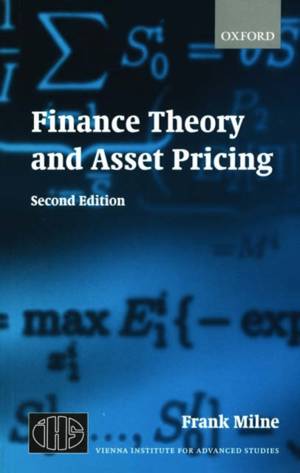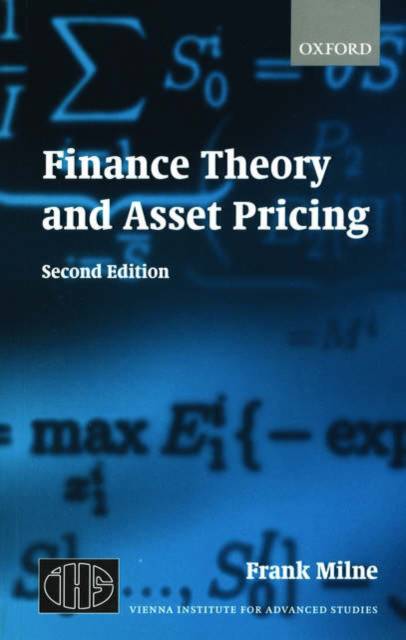
Door een staking bij bpost kan je online bestelling op dit moment iets langer onderweg zijn dan voorzien. Dringend iets nodig? Onze winkels ontvangen jou met open armen!
- Afhalen na 1 uur in een winkel met voorraad
- Gratis thuislevering in België vanaf € 30
- Ruim aanbod met 7 miljoen producten
Door een staking bij bpost kan je online bestelling op dit moment iets langer onderweg zijn dan voorzien. Dringend iets nodig? Onze winkels ontvangen jou met open armen!
- Afhalen na 1 uur in een winkel met voorraad
- Gratis thuislevering in België vanaf € 30
- Ruim aanbod met 7 miljoen producten
Zoeken
Omschrijving
Finance Theory and Asset Pricing provides a concise guide to financial asset pricing theory for economists. Assuming a basic knowledge of graduate microeconomic theory, it explores the fundamental ideas that underlie competitive financial asset pricing models with symmetric information. Using finite dimensional techniques, this book avoids sophisticated mathematics and exploits economic theory to clarify the essential structure of recent research in asset pricing. In particular, it explores arbitrage pricing models with and without diversification, Martingale pricing methods and representative agent pricing models; discusses these ideas in two-date and multi-date models; and provides a range of examples from the literature. This second edition includes a new section dealing with more advanced multi-period models. In particular it considers discrete factor structure models that mimic recent continuous time models of interest rates, money, and nominal rates and exchange rates. Additional sections sketch extensions to real options and transaction costs.
Specificaties
Betrokkenen
- Auteur(s):
- Uitgeverij:
Inhoud
- Aantal bladzijden:
- 246
- Taal:
- Engels
- Reeks:
Eigenschappen
- Productcode (EAN):
- 9780199261079
- Verschijningsdatum:
- 29/05/2003
- Uitvoering:
- Paperback
- Formaat:
- Trade paperback (VS)
- Afmetingen:
- 141 mm x 215 mm
- Gewicht:
- 290 g

Alleen bij Standaard Boekhandel
+ 167 punten op je klantenkaart van Standaard Boekhandel
Beoordelingen
We publiceren alleen reviews die voldoen aan de voorwaarden voor reviews. Bekijk onze voorwaarden voor reviews.











